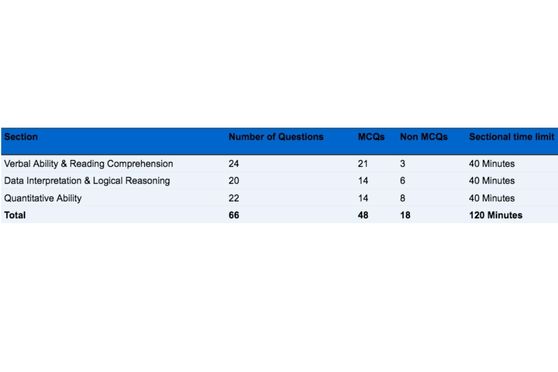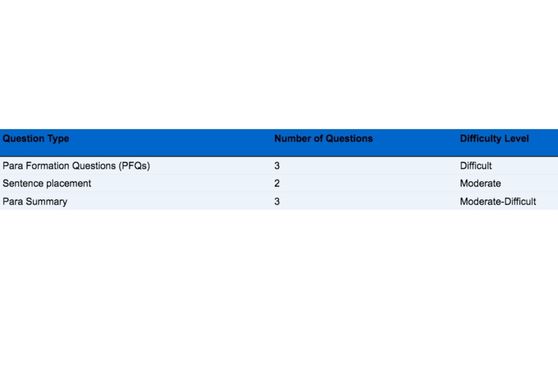CAT 2022 Slot – 2 Paper Analysis by Ramnath Kanakadandi


CAT 2022 was on expected lines in the morning slot. While there were a few changes in the paper compared to the last year, the paper retained its overall structure/pattern.
The following was the pattern of examination in the second slot:
CAT 2022 paper in the afternoon slot was very similar to that in the morning slot. The difficulty level varied slightly across sections, but overall, the paper was similar in structure and feel.
The following was the pattern of examination in the second slot:

The evaluation scheme remained the same as that of the earlier years - Three marks for a correct answer and a negative mark for a wrongly marked MCQ. There were no negative marks for non-MCQs.
Section-wise analysis
The Verbal Ability & Reading Comprehension (VARC) section of slot 2 had 24 questions in the afternoon slot, 16 from Reading Comprehension and 8 from Verbal Ability. The break-up was similar to what was observed in the last couple of years.
The Reading Comprehension (RC) passages were four in number, with four questions per passage.
Most of the passages had questions which involved double negatives – “do not follow + except”, “cannot be inferred + if false”. This contributed to pushing the difficulty level of the section up.
The passage on ‘Language as the formative institution for social life’ was a tough read and the questions were no easy let-offs either. Those who got this passage as their first and continued with it may have drained their valuable time into this for a return that could have been a lot more if it were invested in the other passages or in the VA questions.
Another RC passage, which was on Humans’ capacity to make music was also not a very easy read. Even a well-read student could have found this to be challenging.
The passage on Octopuses was fairly moderate. At least three questions in this passage were easy to answer. The options in this passage were not very close, helping students to zero-in on the answer with a moderate effort.
The passage on teaching engineering with the social perspective as the focus, was also not too easy. There were at least two difficult questions in this passage and two were moderately difficult.

The Verbal Ability (VA) questions would have provided a welcome relief from the rather difficult passages overall, they were not very difficult.
The Verbal Ability questions this year had a surprise in terms of the new question type introduced. The Odd-one-out question gave way to what could be termed as “Sentence Placement” questions. These questions had a sentence that was to be placed at one of the four locations in a given paragraph. The options to be selected indicated the location where this sentence had to be placed. Two such questions were present in the afternoon slot. While the placement was not straightforward, it was not too tough either, placing both these questions in the moderate level of difficulty.
The Para Formation Questions (3 in number) were all four-sentence questions. The level of difficulty was slightly on the higher side, enabling those with a decent amount of practice to be able to crack them with not too much effort. All these three questions were non-MCQs.
There were three Para-summary questions in this slot. All of these had passages which were moderately difficult and the questions were fairly doable.
The distribution of the questions in the Verbal Ability area is as below

DILR
The DILR section, as in the morning slot, had four sets with five questions each. With the number of questions once again becoming equal across all sets, set selection has become important as well as challenging. No longer can one rely on the number of questions as a proxy for the difficulty level of the set.
At first glance, all the sets appeared tough primarily because of the lengthy text, so much so that, one would not be at fault for thinking that they are still in the VARC section. The challenge for solving many sets lay not in the actual logic required to crack the set but to unearth the situation from the given description.
The set on Warehouse network was a very difficult set and required one to understand the situation and crack the logic. It was very time consuming. Further, this was not a set which could be cracked in one go, i.e., the questions should also be solved independently.
The set on Products classification was also tough to solve, primarily because one needs to be careful in translating the given information into equations. Solving the equations was also difficult and could have taken up much time.
The set on Salesmen visiting households was doable, since it was relatively straightforward to solve. However, even in this set, the lengthy description would have prevented students from attempting this set.
The easiest set in the section was the one on Scatter Chart with revenues, costs and employee strength. The scenario provided was quite simple and the questions were straightforward. This was one set that should have been attempted by most students.
On the whole, the DILR section was tough with only one set that could be qualified as must-solve. The other sets were tough to understand or tough to solve.
The difficulty levels of the four sets are summarized in the following table:

A net score of 14-16 would be a decent score for a test-taker to be able to get 85 percentile (sectional cut-off).
QA
The QA section, comprising 22 questions (with 8 non-MCQs), was on the tougher side, with quite a few difficult questions. Some questions from familiar concepts were not direct and would have posed a challenge for most students. Identifying the doable questions would have been a little challenging because quite a few such questions were on the lengthier side.
There were quite a few questions from Averages-Mixtures-Alligations but not all of them were doable. Quadratic Equations, Progressions and ILS also made an appearance in the section.

A net score of 12-14 would be a decent score for a test-taker to be able to get 85 percentile (sectional cut-off).
This analysis is written by Mr. Ramnath Kanakadandi, who is an alumnus of Indian Institute of Management, Ahmedabad and is the CAT Course Director at Triumphant Institute of Management Education Pvt. Ltd (T.I.M.E.). He has 20 years of experience in senior management positions across industries in areas of engineering and technology, business process outsourcing and test-prep.